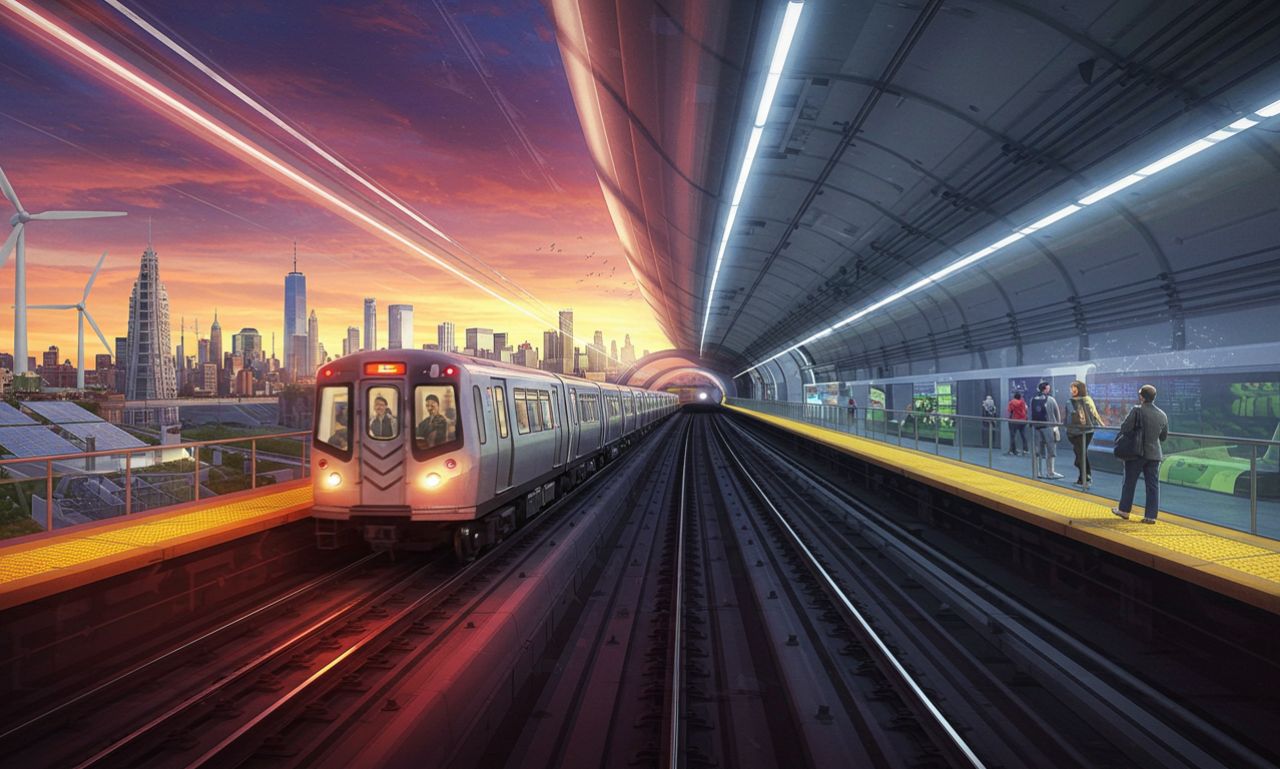The term “Tran NY Tube” is increasingly used to describe innovations and future plans in New York’s underground transit systems. With New York City being one of the most densely populated urban centers in the world, transportation challenges are constant, and solutions must evolve to keep pace with growing demand.
From subway tube tunnels to hyperloop-inspired transit tubes, the city is investing in cutting-edge infrastructure, digital systems, and green technologies. This article explores the concept of the Tran NY Tube, its technological backbone, proposed developments, and its role in the future of urban mobility.
The Current State of NYC Transit
1. Subway System Overview
New York’s Metropolitan Transportation Authority (MTA) oversees the largest subway network in the U.S., with:
-
472 stations
-
Over 665 miles of track
-
More than 5 million riders per weekday pre-pandemic
Despite its scale, the system suffers from:
-
Aging infrastructure
-
Delays and maintenance issues
-
Overcrowding during peak hours
2. Need for Innovation
With urbanization intensifying, the MTA and city planners are forced to reimagine underground transit through smart solutions such as:
-
Automated tube transport systems
-
Hyperloop-style concepts
-
Deep tube tunnels for express transit
This is where the concept of Tran NY Tube enters the discussion.
What is the Tran NY Tube Concept?
Definition
Tran NY Tube refers to a forward-looking vision for New York’s next generation of underground transportation infrastructure. The “Tube” represents a shift from traditional subways to:
-
High-speed, vacuum-powered tube systems
-
Maglev or Hyperloop integration
-
AI-optimized commuter routing
-
Environmentally sustainable designs
It’s not a single project, but rather a term that captures multiple urban transit innovations in tube-style transportation.
Tube-Based Transport Technologies Explained
1. Hyperloop used in Tran NY Tube
A hyperloop is a sealed tube through which a pod travels at high speeds using magnetic levitation. Benefits include:
-
Speeds exceeding 600 mph
-
Minimal air resistance
-
Reduced travel times between boroughs or even cities
Companies like Virgin Hyperloop and Elon Musk’s Boring Company have been exploring the viability of these systems in urban corridors like NYC.
2. Deep-Level Tubes Tran NY Tube
Inspired by London’s deep tube network, New York may consider constructing deep-level transit tubes, which offer:
-
Additional underground capacity
-
Less disruption at surface level
-
Increased safety and noise reduction
3. Pneumatic Transit Revival
Originally experimented with in the 1800s, pneumatic transit tubes are making a comeback as zero-emission people movers for short-distance urban travel.
Proposed Tran NY Tube Projects
1. Interborough Express Tube Corridor
Planned by the MTA, the Interborough Express could be expanded through a tube-based system, linking:
-
Brooklyn
-
Queens
-
Bronx
This would reduce travel times and congestion on subway lines.
2. Midtown-Penn Deep Tube Express
A proposal involves building a deep tube express route from Midtown to Penn Station with automated pods, reducing:
-
Wait times
-
Platform congestion
-
Cross-town commute durations
3. Tunnel 3 Modernization (Water + Transport Hybrid)
Though originally for water, Tunnel 3 has been cited in speculative planning as a multi-purpose conduit for:
-
Emergency transport
-
Drone-based cargo
-
Low-speed automated passenger tubes
Smart Technology in the Tran NY Tube System
1. AI and Predictive Routing
SOA-based (Service Oriented Architecture) systems can optimize:
-
Train frequency
-
Route allocation
-
Real-time commuter alerts
2. Smart Ticketing and Mobile Access
-
NFC-enabled turnstiles
-
Digital MetroCards
-
Biometric access for frictionless commuting
3. Energy Regeneration
Modern transit tubes will use:
-
Regenerative braking
-
Solar-powered station hubs
-
Geothermal temperature control
These features align with NYC’s carbon-neutral transportation goals for 2030.
Challenges and Considerations
1. High Implementation Cost of Tran NY Tube
Developing underground tube systems involves significant investment:
-
Tunnel boring
-
Magnetic track installation
-
System automation and safety controls
Estimates range from $5B to $40B depending on the route and depth.
2. Disruption During Construction
Building new tubes—even deep underground—may impact:
-
Traffic
-
Real estate stability
-
Existing subway operations
3. Political and Public Buy-in
Projects like the Second Avenue Subway have shown that long-term urban transit plans require:
-
Public support
-
Political will
-
Continuous funding over decades
Environmental Impact of Tran NY Tube
Positive Contributions
-
Reduces surface-level pollution by moving vehicles underground
-
Promotes the use of electric-powered mobility
-
Helps meet NYC’s Climate Mobilization Act goals
Potential Risks
-
Carbon emissions during construction
-
Ecological disruption of underground aquifers or habitats
To mitigate this, planners must follow sustainable tunnel engineering practices.
Future of Tran NY Tube: What’s Next?
1. Integration with Regional Transport of Tran NY Tube
Future tubes may connect NYC with:
-
New Jersey (via Hudson tunnel proposals)
-
Long Island (express pods to JFK or Hamptons)
-
Upstate NY via high-speed under-river tubes
2. Public-Private Collaborations in Tran NY Tube
With companies like Boring Co., HyperloopTT, and Siemens Mobility showing interest, we could see:
-
Public-private financing models
-
Revenue-sharing agreements
-
Tech innovation hubs within stations
3. Smart Stations
Stations of the future may include:
-
Facial recognition entry
-
Dynamic digital signage
-
Augmented reality (AR) navigation
-
Air-purified waiting areas
Conclusion
The Tran NY Tube is more than a futuristic idea — it’s a symbol of urban resilience, innovation, and adaptation. As New York City tackles 21st-century transit needs, embracing tube-based systems could unlock faster, cleaner, and more efficient mobility for millions.
Whether through deep tunnel express routes, hyperloop tech, or automated short-distance pods, the city’s infrastructure must evolve. With the right investment, innovation, and public engagement, the Tran NY Tube could become a reality — not just a concept.
